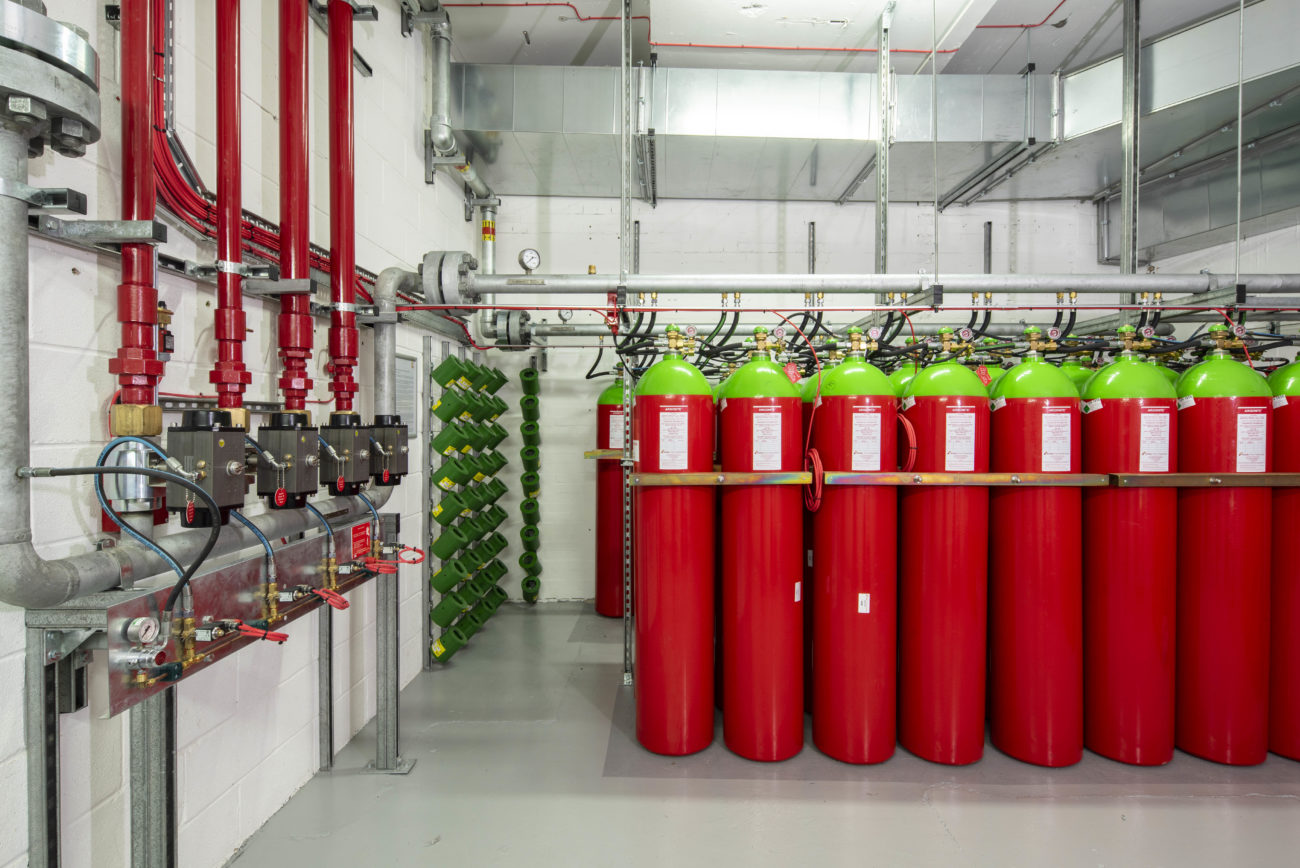What is the Role of a Fire Suppression System in Large Warehouses?
In large warehouse environments, fire suppression systems are indispensable for safeguarding assets, ensuring employee safety, and maintaining business continuity. These systems are engineered to detect and extinguish fires automatically, minimizing potential damage and operational disruptions. In this blog, we share insights on role of fire suppression systems, their types and when to implement them in your warehouse.
Understanding Fire Suppression Systems
Fire suppression systems are automated setups
that identify and combat fires without human intervention. They utilize various
extinguishing agents, such as water, foam, gas, or chemical compounds, tailored
to the specific hazards present in the warehouse.
Key Roles of Fire Suppression Systems in Warehouses
- Asset
Protection
- Inventory
Safety: Warehouses often store high-value
goods. A prompt-response fire suppression system can prevent extensive
inventory loss by swiftly controlling or extinguishing fires.
- Infrastructure
Preservation: Beyond inventory,
these systems protect the building's structural integrity, reducing
repair costs and downtime.
- Employee
Safety
- Immediate
Response: Automated systems act faster than
manual methods, decreasing the risk of injury or fatality among staff.
- Toxic
Fume Mitigation: Certain suppression
agents can neutralize hazardous fumes, ensuring a safer evacuation
environment.
- Operational
Continuity
- Minimized
Downtime: By controlling fires promptly,
these systems reduce operational interruptions, maintaining productivity.
- Regulatory
Compliance: Adhering to fire
safety regulations through proper suppression systems avoids legal
penalties and potential shutdowns.
- Environmental
Protection
- Controlled
Agent Release: Modern systems are
designed to minimize environmental impact by using eco-friendly agents
and containing the spread of hazardous materials during a fire.
Types of Fire Suppression Systems Suitable for Warehouses
- Sprinkler
Systems
- Wet
Pipe Systems: These contain water
in the pipes and discharge it when heat activates the sprinkler heads.
- Dry
Pipe Systems: Filled with
pressurized air or nitrogen, these release water into the pipes upon
activation, suitable for environments prone to freezing.
- Early
Suppression, Fast Response (ESFR) Systems:
Designed for warehouses, ESFR systems use large orifice sprinklers that
activate quickly to control fires as early as possible.
- Ceasefire
Fire Suppression Systems
- Modular
Design: Ceasefire's systems are
pre-engineered and modular, eliminating the need for complex piping and
wiring, making them flexible and cost-effective for warehouse
applications.
- Dual-Agent
Technology: Ceasefire combines
ABC dry chemical with clean agents to create a unique dual-agent gel,
providing efficient fire suppression suitable for various warehouse
environments.
- Water
Mist Systems
- Fine
Mist Application: These systems
discharge a fine mist that cools the fire and displaces oxygen, effective
for a range of fire types and minimizing water damage.
- Foam
Suppression Systems
- Surface
Sealing: Foam agents form a blanket over
flammable liquids, preventing vapor release and suppressing the fire,
ideal for warehouses storing hazardous materials.
- Gaseous
Agent Systems
- Clean
Agents: Utilize gases like FM-200 or CO₂
to suppress fires without leaving residue, suitable for areas with
sensitive equipment.
Implementing Fire Suppression Systems in Warehouses
- Risk
Assessment
- Hazard
Identification: Evaluate the types of
materials stored and potential fire hazards to determine the most
suitable suppression system.
- Regulatory
Requirements: Ensure compliance
with local fire safety codes and standards during system selection and
installation.
- System
Design and Installation
- Customized
Solutions: Design the system to address the
specific layout and hazards of the warehouse, considering factors like
ceiling height, storage configurations, and potential obstructions.
- Professional
Installation: Engage certified
professionals to install the system, ensuring adherence to safety
standards and optimal functionality.
- Maintenance
and Testing
- Regular
Inspections: Conduct routine
checks to verify system integrity and readiness, identifying and
addressing any issues promptly.
- Employee
Training: Train staff on system operation
and emergency procedures to enhance overall safety and response
effectiveness.
Conclusion
Fire suppression systems
are vital components of warehouse safety strategies, offering protection for
assets, personnel, and operations. Implementing an appropriate system, such as
those offered by Ceasefire suppliers like Cignetix Systems are tailored to the
specific needs and risks of the warehouse, ensures rapid response to fire
incidents, minimizing damage and facilitating business continuity. Regular
maintenance and adherence to safety protocols further enhance the effectiveness
of these systems, providing a secure environment for warehouse operations.




Comments
Post a Comment